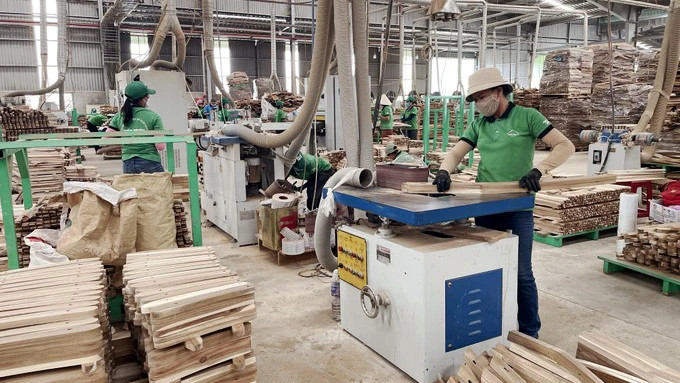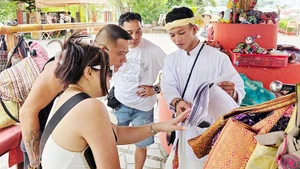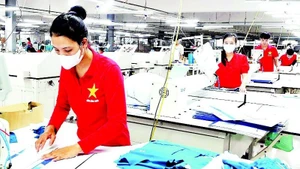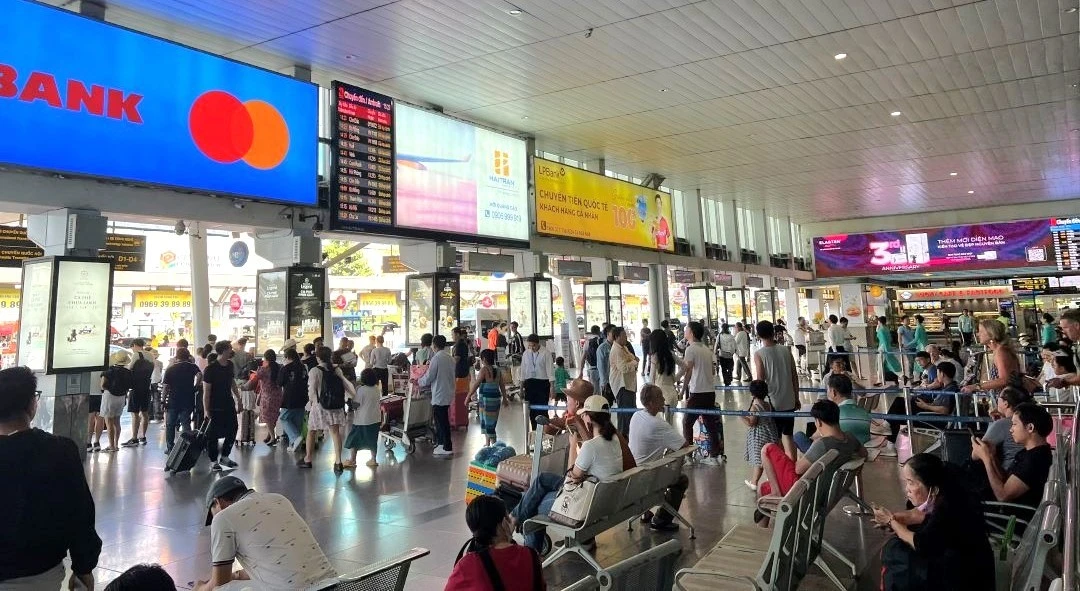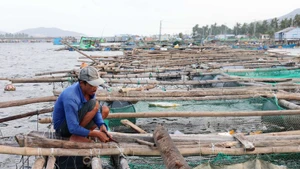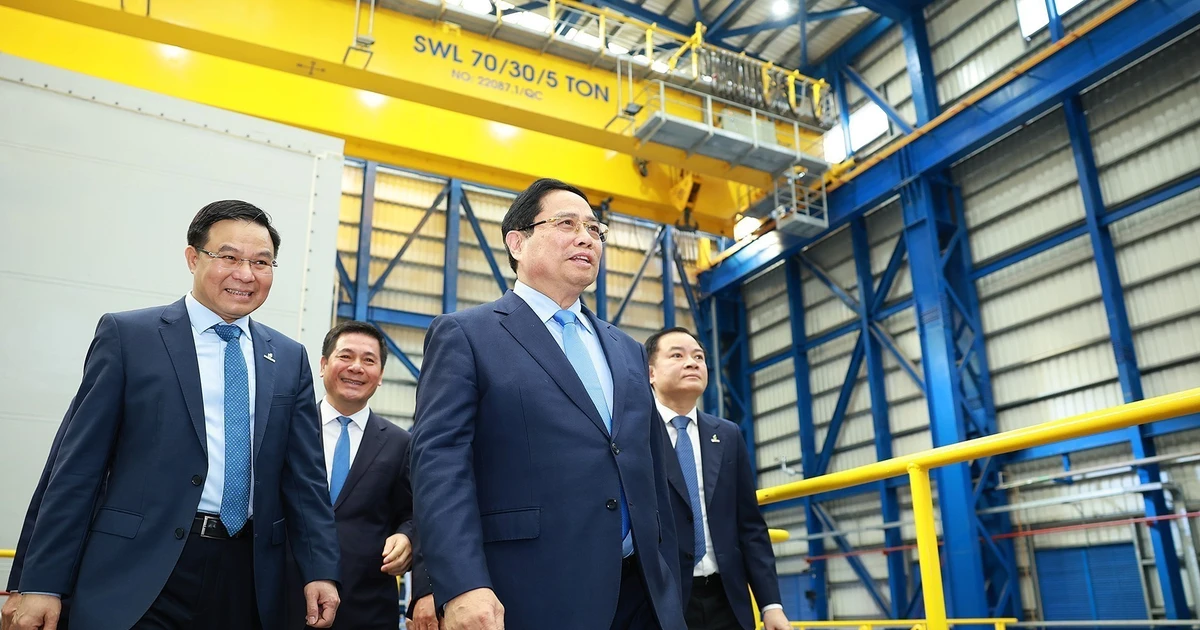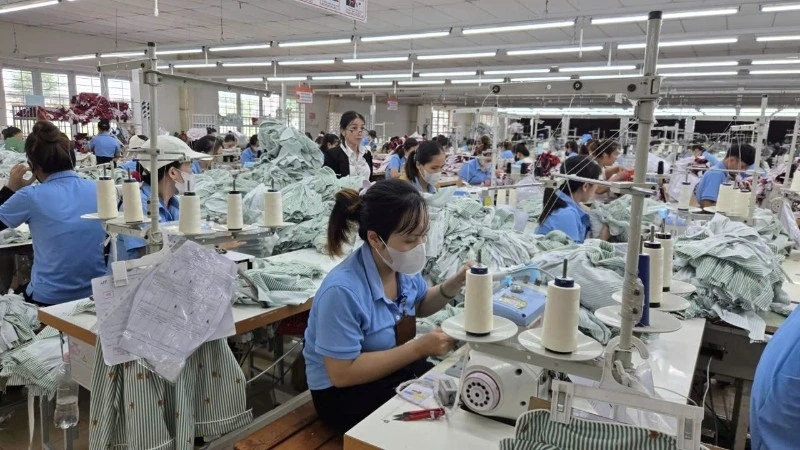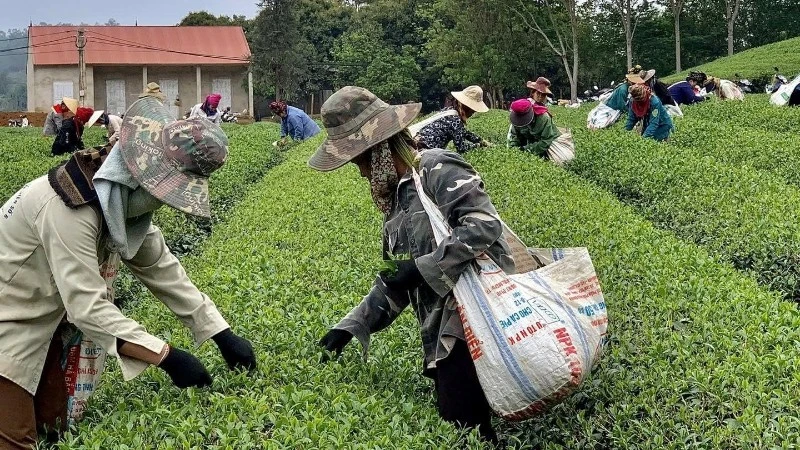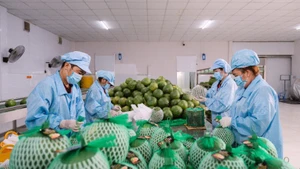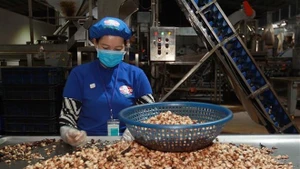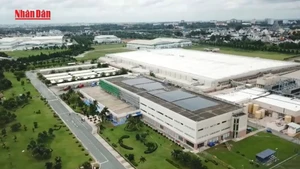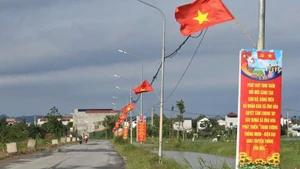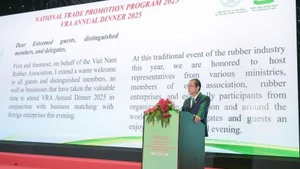The project to build five pilot raw material areas that meet domestic consumption and export standards in the 2021-2025 period, implemented by the Ministry of Agriculture and Rural Development, has achieved certain results. This is a starting point for creating a sustainable value chain, enhancing value and increasing product competitiveness.
Building standard raw material areas
In 2023, the export turnover of agriculture, forestry and fishery products reached more than 53 billion USD, the trade surplus of the whole industry reached more than 11 billion USD, and the agricultural sector’s GDP growth reached 3.8%, the highest in recent years. However, the construction of concentrated raw material areas serving production units is still limited.
According to the Director of the Department of Economic Cooperation and Rural Development, Le Duc Thinh, it is necessary to build standard raw material areas, invest in infrastructure to serve production and business, organise production through cooperatives to develop public services of the State, promote the issuance of high-tech growing area codes, digital transformation, promote agricultural credit insurance, especially build the chain of links from production, processing, and consumption of products in raw material areas. There is no other way but to strengthen the linkage between producers, cooperatives, and enterprises.
Gia Lai Province, one of the provinces with the largest coffee-growing area in the country, has mobilised many resources and implemented solutions from the central to the local level to develop production linkages in the chain to increase value.
Currently, the whole province has nearly 240,000 hectares of crop areas implementing production linkages associated with the consumption of agricultural products. The linked area of coffee reaches 44,012 hectares, with an implementation cost of about 15.6 billion VND, of which the proposed budget for state budget support is 8.4 billion VND. The pioneer in the production linkage chain must mention the model of Vinh Hiep Company Limited as the focal point of the linkage chain.
The linkage model is spread across six districts with the participation of 12 cooperatives and 7,000 households, on an area of 20,000 hectares (4C process: 10,000 hectares, UTZ process: 1,241 hectares, Organic process: 45 hectares) and 8,714 hectares linked with direct coffee-growing households. The annual purchasing output reaches 70,000 tonnes of coffee beans.
Determining the development of agriculture and forestry in the chain, thereby stimulating production and increasing economic value, is also a strength in economic development in Quang Tri Province. To develop raw material areas for agricultural production, the province has had many solutions to stimulate production, such as Supporting 100,000 tissue-based seedlings, materials and equipment, organising training for officials and people on forest planting, care and exploitation techniques to achieve and maintain FSC certification standards.
Thanks to that, many large-scale intensive forest planting models have been formed in Quang Tri. We can mention the hybrid acacia model, with a scale of 16 hectares, of households in Cam Tuyen Commune, Cam Lo District; Vinh Thuy Commune, Vinh Linh District; Trieu Thuong Commune, Trieu Phong District and Hai Phu Commune, Hai Lang District.
Not only intensive forest planting models among the people in Quang Tri, but models of linkage between forestry cooperatives and companies specialising in processing wood products have also appeared. For example, the sustainable linkage model of Keo Son with Nguyen Phong Wood One Member Co., Ltd. Currently, the two sides maintain production according to the agreed scale of 423.5 hectares of forest. In 2023, 89 hectares of hybrid acacia trees will be newly planted using tissue culture methods. Expanding the linkage to 2,000 hectares by 2026 has brought high economic benefits.
According to the leader of the Department of Agriculture and Rural Development of Quang Tri Province, the linkage in production, processing and consumption of forestry products in the province has been initially successful, forming several linkage chains with companies. However, due to the high price of wood chips, there is little price difference between large wood forests and wood chips, so people are not interested in the long-term value of FSC-certified plantation wood.
On the other hand, the price of plantation wood fluctuates erratically, leading to difficulties linking consumption with businesses. In addition, many face difficulties in product output, so consumption is limited. These limitations are obstacles in specialised and sustainable raw material areas, not only in Quang Tri Province but also in many localities selected for the pilot project to develop specialised forestry raw material areas.
Promoting capital allocation and investment support
To help localities overcome difficulties in developing specialised raw material sources, the Ministry of Agriculture and Rural Development has developed and advised the Government to issue mechanisms to support localities in the project area. In particular, it is necessary to mention the Bank for Agriculture and Rural Development signed a cooperation plan with the Department of Cooperative Economics and Rural Development (the focal unit of the raw material area project) to establish 66 new cooperatives and five cooperative unions in addition to training and coaching to improve cooperative management capacity and training for cooperative directors. They are building 22 projects, specialised and modern agricultural and forestry extension models, and at the same time, organising five preferential interest rate programs for customers to support the project.
In fact, with the resources of enterprises, cooperatives, localities and banks, many models of intensive production linkage have brought great economic efficiency to people and, at the same time, affirmed that building standard raw material areas will overcome the limitations of agriculture such as small-scale, fragmented production, lack of cooperation and linkage.
In addition, strengthening the connection between raw material areas and processing factories, improving management capacity on production data information, serving the implementation of product traceability, and building growing area codes have created trust for domestic and foreign consumers.
Thanks to synchronous policies from the Central to local levels, many raw material areas in the project have achieved certain successes. In Gia Lai Province alone, the export value of coffee in 2022 reached 490 million USD/690 million USD of the total export value of the province.
By 2030, Gia Lai will have a coffee area of about 100,000 hectares, of which 80% of the coffee area is produced according to export standards. The province also aims to promote the application of advanced water-saving irrigation technology, agricultural mechanisation, sustainable speciality coffee production, and circular agriculture for coffee products to exploit the strengths of coffee trees, one of the local key crops in agricultural economic development. Minister of Agriculture and Rural Development Le Minh Hoan affirmed that agriculture development should combine large and small scales. It is necessary to accumulate and concentrate on large value chains while not eliminating the role of small businesses, small but not isolated, they must link together. How to be small but must be connected in a chain, like drops of water connecting to form the ocean, not eliminating the small, the small connected will create a big chain.
Based on the perspective of connecting the small into a chain, the Ministry of Agriculture and Rural Development has established a ministerial-level Steering Committee with 31 members. Deputy Minister Tran Thanh Nam is Head of the Committee, and members are leaders of the People's Committees of 13 provinces participating in the project and leaders of departments, divisions and units under the Ministry.
The Department of Economic Cooperation and Rural Development has also established two working groups in charge of each region to implement the project locally. In addition, building a community agricultural extension team, helping to transfer agricultural science and technology knowledge, consulting on how to organise production and consulting on market price information.
Thanks to that, after only two years of implementing the project, the five pilot raw material areas have taken shape and developed in both scale and quality of activities. Deputy Minister Tran Thanh Nam said that in the coming time, the project participants will be agricultural processing and consumption enterprises, cooperatives and 185,000 farming households, of which the core is cooperatives.
According to the Department of Economic Cooperation and Rural Development, the total area of the five agricultural commodity raw material areas under the project is up to 158,300 hectares. Of which, fruit trees in the northern mountainous region (Son La, Hoa Binh) with an area of 14,000 hectares (passion fruit, pineapple, mango); sustainable certified forest timber in the central coastal region (Quang Tri, Thua Thien Hue) with an area of 22,900 hectares; Central Highlands coffee (Gia Lai, Dak Lak) with an area of 11,200 hectares; rice in the Long Xuyen Quadrangle (Kien Giang, An Giang) with 50,000 hectares; Fruit trees in Dong Thap Muoi region (Dong Thap, Tien Giang, Long An) have an area of 60,200 hectares (mango, jackfruit, durian). Currently, five raw material areas are developing well, bringing high economic value.
